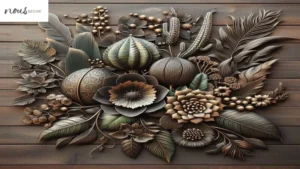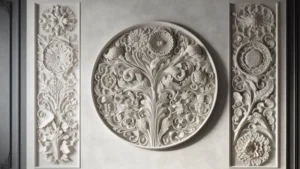As art lovers, we all know the value of a beautiful piece of wall art. Whether it’s a painting, photograph, or print, our wall art serves as a visual centerpiece for our living spaces.
However, with time and exposure to dust and pollutants, even the most stunning pieces can quickly become tarnished and dull. That’s why proper maintenance is crucial in preserving their beauty.
In this article, we at Nousdecor will guide you on How To Clean Wall Art effectively while preserving its quality. We’ll cover materials and suitable cleaning products, gentle techniques to avoid damage, and long-term preservation tips for lasting vibrancy and beauty.
Thus, let us get started!
How To Clean Wall Art By Understanding Wall Art Materials
You’ll want to take a closer look at what your wall decor is made of so you can make sure it stays in top shape.
Common Wall Art Materials used for wall art include canvas, paper, metal, wood, and glass. Each material requires different cleaning methods to prevent damage or fading.
For instance, if you have personalized handcrafted artwork like canvas paintings, avoid using water-based cleaners that may cause the paint to run.
Cleaning safety is also an important consideration when maintaining your wall art pieces. Some cleaning agents may contain harsh chemicals that can be harmful to both you and the artwork itself.
Always read labels carefully before using any product on your wall decor. It’s also best to test new products on a small and inconspicuous area first before applying it all over.
When it comes to maintaining wall art’s beauty, understanding the materials they are made of is crucial. Knowing how each material reacts with certain cleaning agents will help prevent damage or discoloration of your artwork.
In the next section, we’ll discuss how choosing the right cleaning products can further protect and enhance the beauty of your wall decor pieces without causing any harm.
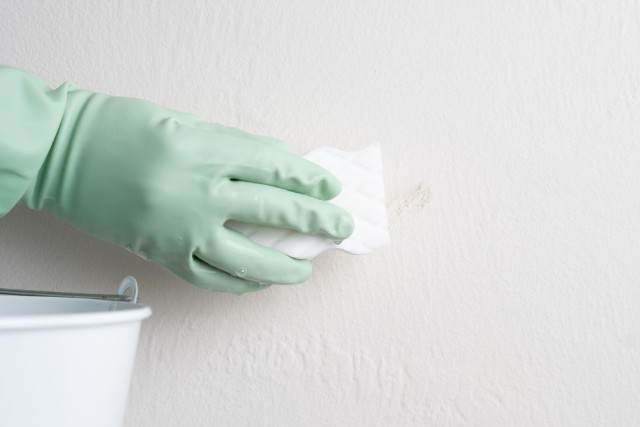
How To Clean Wall Art by Choosing the Right Cleaning Products
When it comes to keeping your wall art looking its best, it’s important to select cleaning products that are specifically designed for the type of material your pieces are made from.
For example, if you have a canvas painting, you’ll want to use a different product than if you have a metal sculpture. Non-toxic options are always the safest choice as they won’t damage the surface or leave behind harsh chemicals.
It’s also important to test any cleaning products on small areas before applying them to larger sections of your wall art. This will help ensure that there aren’t any adverse effects or discoloration caused by the product.
Additionally, when using any cleaning product, make sure to follow all instructions on the label carefully and use only as much as is necessary.
By choosing the right cleaning products and testing them beforehand, you can effectively maintain your wall art without causing any damage.
In our next section, we’ll discuss some gentle cleaning techniques that can be used in conjunction with these products for even better results.
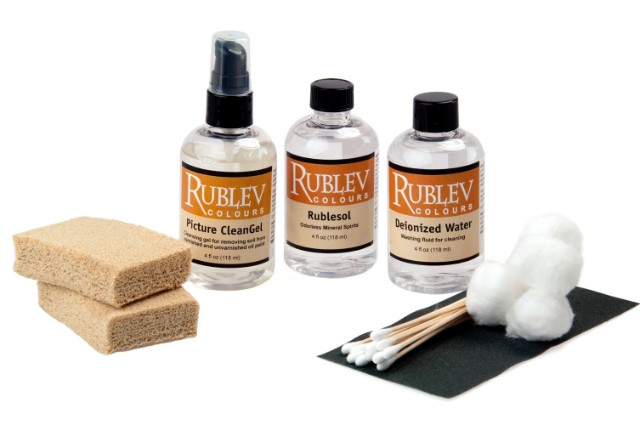
How To Clean Wall Art with Gentle Cleaning Techniques
To keep your precious artwork looking its best, it’s time to learn some gentle cleaning techniques that won’t harm the materials. One of the most important tools to have is a microfiber cloth.
This special cloth is designed to attract and hold onto dust particles without scratching the surface of your art piece. Simply use a dry microfiber cloth to gently wipe away any dust or debris that may have accumulated.
When it comes to using cleaning solutions, it’s important to choose natural options that won’t damage the artwork.
Avoid using harsh chemicals like bleach or ammonia, as these can cause discoloration and other forms of damage over time. Instead, opt for natural cleaners like distilled white vinegar mixed with water or a solution made from baking soda and water.
Remember, when cleaning your wall art, less is more! Don’t oversaturate your microfiber cloth with cleaning solution; instead, lightly mist the surface of the artwork before wiping with a dry microfiber cloth.
With these gentle techniques and natural cleaning solutions in hand, you’ll be able to maintain your artwork’s beauty for years to come.
As much as we try our best in maintaining our wall art pieces through regular cleanings, there are still instances where stubborn stains or dust accumulations cannot be easily removed by just simple wiping techniques.
In this case, we will discuss how we can deal with such issues without causing further damage on our precious artworks.

Dealing with Stubborn Stains or Dust
Let’s tackle those pesky stains and dust spots on your beloved artwork without risking any damage. When it comes to stubborn stains, avoid using abrasive cleaners or scrubbing too hard as this could damage the surface of your art piece.
Instead, try using a soft-bristled brush or microfiber cloth to gently wipe away the dirt or grime. For fingerprints, use a cotton swab dipped in rubbing alcohol to remove them without leaving streaks.
Preventing discoloration is also important when cleaning wall art. Avoid exposing your artwork to direct sunlight or other sources of UV light as this can cause fading over time. If you do need to hang your artwork in a sunny area, consider investing in UV-protective glass for framing.
Additionally, keep an eye out for signs of mold or mildew growth and address them immediately with a solution of equal parts water and white vinegar.
Incorporating these gentle yet effective cleaning techniques into your routine will help maintain the beauty and longevity of your artwork. But don’t stop there! Read on for some long-term preservation tips that will keep your pieces looking their best for years to come.
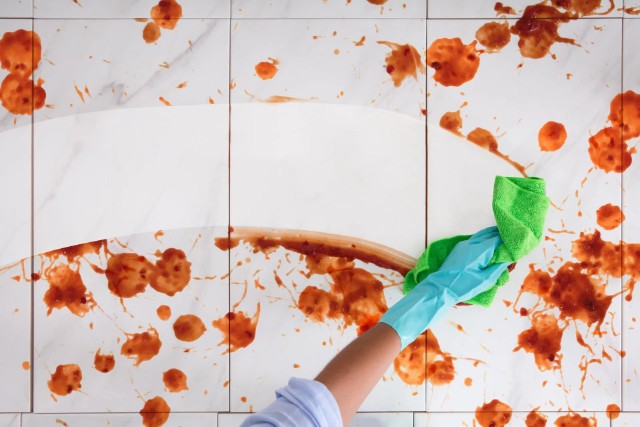
Long-Term Preservation Tips
You can ensure your cherished artwork remains in pristine condition for years to come by incorporating these preservation tips into your routine. One of the most important things you can do is store your art properly.
Make sure it is hung or stored in a place that is not exposed to direct sunlight, as this can cause fading and damage over time. Additionally, avoid placing pieces near heating or cooling vents, as extreme temperatures and humidity levels can also harm them.
For more tips related to art placement, maybe you can consider visiting our article on artistic installation ideas!
Another tip for long-term preservation is investing in professional restoration services if necessary. If you notice any significant damage or wear and tear on your art, don’t hesitate to seek out a professional who specializes in restoring fine artwork.
They will have the knowledge and tools needed to carefully repair any damage without causing further harm to the piece.
Finally, consider using storage solutions specifically designed for artwork if you need to keep pieces safely tucked away for an extended period of time. Acid-free boxes or sleeves are ideal options that will protect against dust and debris while allowing for proper ventilation.
By following these tips, you’ll be able to enjoy your beautiful wall art for many years without worrying about deterioration or damage over time.

Frequently Asked Questions
Conclusion
So, there you have it! That’s our guide on How To Clean Wall Art for you! By understanding the materials of your pieces and choosing the right cleaning products, you can easily keep them looking their best for years to come.
Remember to always use gentle cleaning techniques and avoid harsh chemicals or abrasive tools that could damage the surface of your art. And if you encounter stubborn stains or dust, don’t panic – there are plenty of safe and effective solutions available.
By taking these steps and following some long-term preservation tips, such as avoiding direct sunlight and keeping your art away from moisture or extreme temperatures, you can ensure that your beloved pieces will continue to brighten up your walls for many more years.
So go ahead, give them a little TLC – they deserve it!


